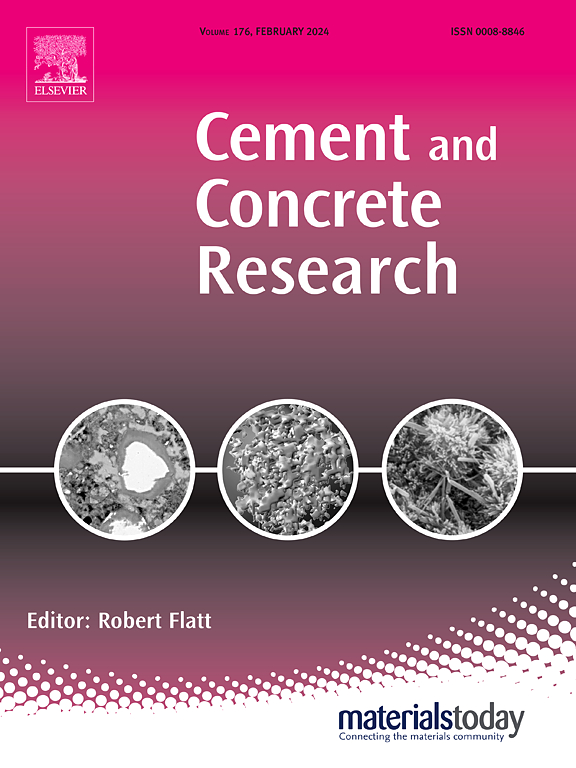不同温度下改性电弧炉炉渣中硅酸三钙形成的原位观察
IF 13.1
1区 工程技术
Q1 CONSTRUCTION & BUILDING TECHNOLOGY
引用次数: 0
摘要
电弧炉炼钢渣是电弧炉炼钢过程中产生的重要副产物,利用电弧炉炉渣生产水泥熟料具有潜在的经济效益和环境效益。作为硅酸盐水泥熟料的主要水化相,电炉炉渣中硅酸三钙(C3S - 3CaO∙SiO2)的形成对电炉炉渣用于水泥生产起着至关重要的作用。在这项研究中,我们对不同温度下改性电炉渣的C3S形成和渣结晶进行了现场观察。结果表明,在-1500 K/min℃的冷却速率下,从1600℃快速冷却至室温,形成由硅酸二钙(C2S)和铁酸钙(CF)基渣组成的层状结构。在等温和非等温条件下观察了C3S晶体的生长过程。在低过冷度的等温条件下,C3S晶体主要形成等轴形状,而较高的过冷度促进了枝晶C3S的发展。C3S晶体的生长伴随着C2S的转化反应:C2S (s) + CaO (l)→C3S (s)。1600℃保温时间延长,有利于C3S成核,导致渣中C3S含量升高。本文章由计算机程序翻译,如有差异,请以英文原文为准。
In-situ observations of tricalcium silicate formation in modified electric arc furnace slag under different temperature regimes
Electric Arc Furnace (EAF) steelmaking slag is a significant byproduct generated during EAF steelmaking and utilizing EAF slag for cement clinker production potentially offers both economic and environmental benefits. The formation of tricalcium silicate (C3S - 3CaO∙SiO2) in EAF slag, the principal hydration phase in Portland cement clinker, plays a critical role in enabling the utilization of EAF slag for cement production. In this study, we conducted in-situ observations of C3S formation and slag crystallization in modified EAF slags under varying temperature regimes. The results indicated that rapid cooling from 1600 °C to room temperature at a cooling rate of -1500 K/min °C led to the formation of a layered structure consisting of dicalcium silicate (C2S) and a calcium ferrite (CF) based slag. The process of C3S crystal growth was observed under both isothermal and non-isothermal conditions. Under isothermal condition with low degree of undercooling, the C3S crystals predominantly formed equiaxed shapes, whereas higher undercooling levels promoted the development of dendrites C3S. The growth of C3S crystals is accompanied by the transformation of C2S via the reaction: C2S (s) + CaO (l) → C3S (s). Extending the holding time at 1600 °C enhanced C3S nucleation, resulting in a higher C3S content in the slag.
求助全文
通过发布文献求助,成功后即可免费获取论文全文。
去求助
来源期刊

Cement and Concrete Research
工程技术-材料科学:综合
CiteScore
20.90
自引率
12.30%
发文量
318
审稿时长
53 days
期刊介绍:
Cement and Concrete Research is dedicated to publishing top-notch research on the materials science and engineering of cement, cement composites, mortars, concrete, and related materials incorporating cement or other mineral binders. The journal prioritizes reporting significant findings in research on the properties and performance of cementitious materials. It also covers novel experimental techniques, the latest analytical and modeling methods, examination and diagnosis of actual cement and concrete structures, and the exploration of potential improvements in materials.
 求助内容:
求助内容: 应助结果提醒方式:
应助结果提醒方式:


